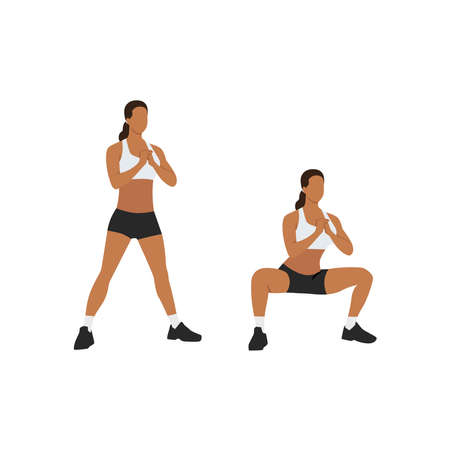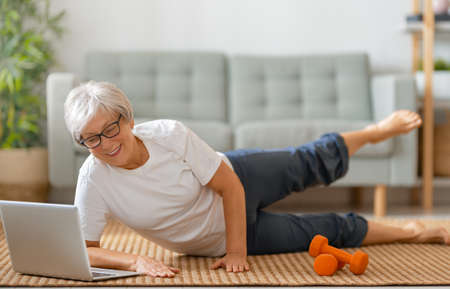Understanding Fall Risk in Older Adults
Why Falls Matter for Older Americans
Falls are a serious concern for older adults in the United States. Every year, millions of Americans aged 65 and older experience falls. According to the Centers for Disease Control and Prevention (CDC), one out of four older adults falls each year, but less than half tell their doctor. Falls can lead to injuries like hip fractures, head trauma, and even loss of independence. Understanding why falls happen is the first step toward preventing them.
Main Causes and Risk Factors for Falls
Falls don’t just happen by accident—they usually result from a mix of factors related to health, environment, and lifestyle. Here are some common causes and risk factors:
| Risk Factor | Description | Real-Life Example |
|---|---|---|
| Poor Balance | Muscle weakness or nerve issues can affect stability. | A senior feels unsteady when walking across the living room. |
| Vision Problems | Difficulty seeing obstacles increases fall risk. | Trouble noticing steps or items on the floor at home. |
| Medications | Certain prescriptions may cause dizziness or drowsiness. | A person feels lightheaded after taking blood pressure meds. |
| Chronic Conditions | Conditions like arthritis, diabetes, or stroke impact movement. | Knee pain makes it hard to move quickly if needed. |
| Home Hazards | Poor lighting, loose rugs, or cluttered walkways create danger zones. | A throw rug slips underfoot in the hallway. |
| Lack of Physical Activity | Inactive lifestyles weaken muscles and reduce flexibility. | Someone who rarely exercises finds it hard to get up from a chair safely. |
Statistics Highlighting the Issue
- About 36 million falls are reported among older adults annually in the U.S., resulting in over 32,000 deaths each year.
- Falls are the most common cause of traumatic brain injuries among seniors.
- The financial toll for fall injuries is expected to reach $101 billion by 2030.
The Real-Life Impact on Seniors and Families
The aftermath of a fall can be life-changing. Many older adults fear falling again, which may lead them to limit their activities. This can result in further physical decline, depression, and social isolation. Families often need to step in with caregiving or seek out assisted living solutions if a loved one is injured. By understanding these risks and challenges, we can start looking at innovative ways—like targeted exercise programs—to help keep older Americans safe and independent.
2. Evidence-Based Approaches to Fall Prevention
Fall prevention is a top priority for older adults and their families across the United States. Many falls can be prevented through exercise programs that are backed by scientific research and clinical guidelines. Below, we review some of the most effective, evidence-based approaches to help seniors stay safe and independent.
What Does the Research Say?
Recent studies show that specific types of exercise can significantly reduce fall risk among older adults. The Centers for Disease Control and Prevention (CDC) and the American Geriatrics Society both recommend exercise as a key strategy in fall prevention programs. Clinical trials highlight that not all exercises are created equal—certain routines have proven benefits for balance, strength, flexibility, and coordination.
Key Types of Exercise Interventions
| Type of Exercise | Benefits | Examples |
|---|---|---|
| Balance Training | Improves stability, reduces fear of falling | Tai Chi, standing leg lifts, heel-to-toe walks |
| Strength Training | Builds muscle power, supports daily activities | Chair squats, resistance bands, light weights |
| Flexibility Exercises | Keeps joints limber, prevents stiffness | Gentle stretching, yoga poses for seniors |
| Aerobic Activity | Boosts endurance and heart health | Walking groups, water aerobics, cycling on stationary bikes |
| Functional Mobility Drills | Enhances real-world movement patterns | Step-ups on stairs, practicing getting up from a chair safely |
Popular Programs Recommended in the U.S.
- Tai Chi for Arthritis and Fall Prevention: Endorsed by the CDC, Tai Chi classes are widely available at local senior centers and YMCAs.
- Matter of Balance: A community-based program designed to help older adults manage concerns about falls while increasing activity levels.
- Otago Exercise Program: Originally developed in New Zealand but adopted in many U.S. states; this physical therapist-led routine includes strength and balance exercises performed at home.
- Stay Active and Independent for Life (SAIL): Focuses on strength, balance, and fitness in group settings or online formats.
The Role of Personalized Plans
No two individuals have exactly the same needs or abilities. Experts agree that exercise interventions should be tailored to each person’s health status, mobility level, and preferences. Working with a physical therapist or certified trainer can ensure safety and maximize results. Many Medicare Advantage plans even offer free or discounted access to approved fitness programs for seniors.

3. Innovative Group Exercise Programs
Community-Driven Approaches to Fall Prevention
Across the United States, more community centers and organizations are adopting creative group exercise programs that help older adults stay active while reducing their risk of falling. These programs not only focus on physical health, but also encourage social connections, which are just as important for overall well-being. Below are some popular examples found in many American communities.
Balance Training at Local Senior Centers
Many senior centers now offer specialized balance classes designed by physical therapists or certified trainers. These classes often include gentle stretching, strength-building movements, and balance exercises using chairs or resistance bands. The group setting makes it easy to stay motivated and make new friends.
| Program Name | Main Activities | Typical Location | Benefits |
|---|---|---|---|
| Stay Strong & Steady | Balance drills, chair yoga, resistance band workouts | Senior center activity rooms | Improves balance, increases strength, boosts confidence |
| Fall-Proof Fitness | Standing and seated exercises, core strengthening, gait training | Community gyms or rec centers | Reduces fall risk, enhances mobility, supports independence |
Outdoor Walking Groups for Seniors
Walking groups are a fun and free way for older adults to exercise together. Many neighborhoods have local walking clubs that meet in parks or along safe sidewalks. Some groups even use walking poles for extra support and balance. These outdoor activities provide fresh air and the chance to explore the community together.
| Walking Group Type | Main Features | Meeting Place | Social Benefits |
|---|---|---|---|
| Pole Walking Club | Pole-assisted walking, warm-up stretches, cool-down routines | Parks and nature trails | Makes exercise accessible for all fitness levels; encourages teamwork and conversation |
| Neighborhood Strollers | Gentle pace walks, route rotation, group-led safety checks | Local sidewalks and community paths | Fosters friendships; keeps seniors engaged with their local area |
The Power of Community Support in Exercise Programs
The key to these innovative group exercise programs is the sense of belonging they create. When older adults participate together in fun activities—whether it’s learning new balance skills at the senior center or joining friends for a morning stroll—they’re more likely to stick with their routines and feel safer moving every day. These programs reflect the American spirit of community involvement and make healthy aging more enjoyable for everyone.
4. Technology-Integrated Solutions
How Technology Empowers Older Adults to Stay Active and Safe
Modern technology is making it easier than ever for older adults to participate in exercise programs that help reduce fall risk. From wearable fitness trackers to telehealth platforms and virtual fitness classes, these tools provide both motivation and accessibility—two key factors in helping seniors stay active and safe at home.
Wearable Devices: Your Personal Activity Coach
Wearable devices like smartwatches and fitness trackers are gaining popularity among older adults in the United States. These devices track daily steps, monitor heart rate, remind users to move, and even detect falls automatically. The best part? Many wearables sync with user-friendly apps, making it simple to set goals and celebrate achievements. By providing real-time feedback, wearables help older adults build healthy habits and feel more confident about their mobility.
Popular Wearable Features for Seniors
| Feature | Benefit |
|---|---|
| Step Counting | Encourages daily movement goals |
| Fall Detection | Alerts caregivers or family in case of a fall |
| Heart Rate Monitoring | Keeps track of exertion during exercise |
| Reminders to Move | Prevents long periods of inactivity |
| User-Friendly Apps | Makes tracking progress easy and fun |
Telehealth Platforms: Expert Guidance from Home
Telehealth platforms connect older adults with physical therapists or fitness professionals without needing to leave home. Through video calls, seniors can receive personalized exercise plans, real-time feedback on their movements, and ongoing support. This not only increases access for those who have transportation challenges but also ensures regular check-ins with healthcare professionals—a major plus for fall prevention.
Virtual Fitness Classes: Social & Accessible Exercise Options
Virtual fitness classes offer a convenient way for older adults to join group exercises tailored for their abilities. These classes are available on demand or live via popular platforms like Zoom or YouTube. Participants can engage in balance training, strength exercises, or flexibility routines—all from the comfort and safety of their living room. Plus, joining virtual classes helps combat feelings of isolation by fostering a sense of community among participants.
Benefits of Technology-Integrated Exercise Programs for Older Adults
| Technology Solution | Main Benefits for Fall Prevention |
|---|---|
| Wearable Devices | Boosts motivation, tracks activity, detects falls early |
| Telehealth Platforms | Provides expert advice, personalized guidance, easy access to care |
| Virtual Fitness Classes | Makes group exercise social and accessible anywhere, anytime |
By integrating these innovative technologies into exercise programs, older adults gain more control over their health, improve their confidence, and enjoy greater independence—all while reducing the risk of falls.
5. Adapting Programs for American Lifestyles
Understanding the Diversity of Older Adults in the U.S.
Older adults in America come from many different backgrounds, live in a variety of settings, and have unique preferences when it comes to exercise. To make fall prevention programs successful, its important to adapt them to fit these diverse needs. Whether someone lives in a suburban house, an urban apartment, or a retirement community, there are ways to make exercise routines both effective and enjoyable.
Tailoring Exercise Routines: Practical Tips
Respecting Individual Preferences
Some older adults prefer solo activities at home, while others enjoy group classes at local community centers or gyms. Offering options such as online video classes, walking clubs, or dance groups can help match personal interests and comfort levels.
Considering Cultural Norms
Cultural background can influence how comfortable someone feels with certain types of exercise. For example, some may value group activities and social interaction, while others might prefer more private routines. Including culturally familiar music, dance styles, or traditions—like Tai Chi or Zumba—can make programs more inviting.
Adapting to Different Living Situations
| Living Situation | Recommended Exercise Options |
|---|---|
| Suburban Home | Walking in neighborhoods, gardening, home exercise videos |
| Urban Apartment | Chair exercises, resistance bands, virtual group fitness classes |
| Retirement Community | Group balance classes, water aerobics, yoga sessions on-site |
| Rural Area | Outdoor hiking, local senior center programs, online instruction |
Making Exercise Accessible and Fun
- Flexibility: Offer morning and evening sessions to fit busy schedules or family commitments.
- Simplicity: Use everyday objects like chairs or soup cans for strength training if equipment is limited.
- Social Connection: Encourage buddy systems or intergenerational activities involving grandchildren or neighbors.
- Cultural Relevance: Celebrate holidays or cultural events with themed movement sessions.
The Role of Technology
Many older Americans are becoming more comfortable with technology. Using simple apps for reminders or progress tracking, joining virtual classes through Zoom or YouTube, and sharing success stories on social media can all help keep participants motivated and connected.
Key Takeaways for Program Adaptation
- Create flexible schedules and formats to reach more people.
- Incorporate culturally familiar elements and group support.
- Select exercises that fit different spaces and resources.
- Use technology to boost participation and engagement when possible.
By considering these factors, innovative exercise programs can become more accessible and effective for reducing fall risk among Americas diverse population of older adults.


